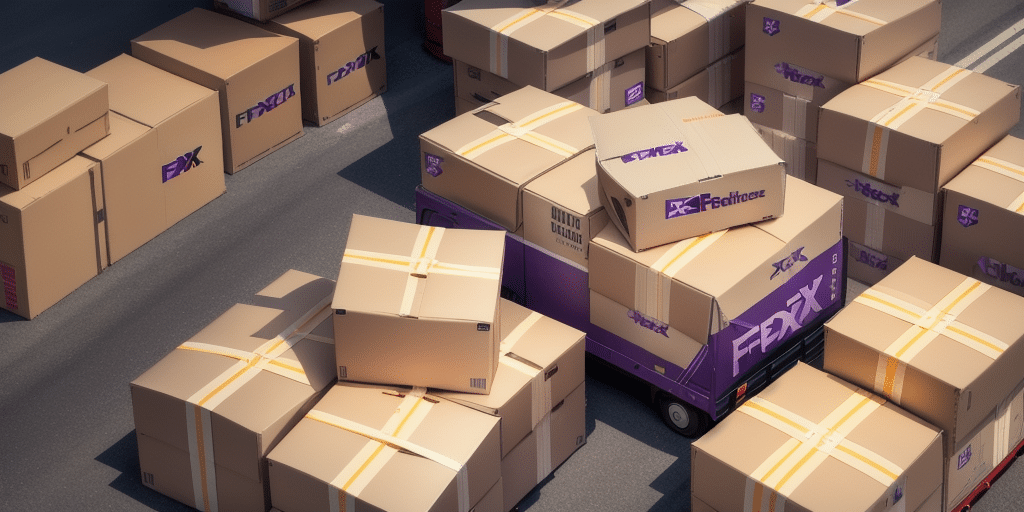As a business owner, understanding the importance of having a seamless and efficient shipping process is crucial. With the integration of FedEx with ShipStation, businesses can access numerous benefits that save time, money, and effort. In this article, we'll discuss why integrating FedEx with ShipStation is important, provide an in-depth analysis of the benefits, and offer a comprehensive guide to connecting, optimizing, and managing FedEx through ShipStation.
Benefits of Integrating FedEx with ShipStation
Time and Effort Savings
Integrating FedEx with ShipStation streamlines the shipping process by allowing businesses to create shipping labels in bulk, compare rates from different carriers, and automatically update customers with tracking information. According to a Business News Daily report, businesses that automate their shipping processes can reduce handling time by up to 50%, enabling them to focus more on core business activities.
Cost Savings
ShipStation provides access to discounted shipping rates, enabling businesses to save significantly on shipping expenses. For example, small businesses can save up to 30% on shipping costs by leveraging ShipStation’s negotiated rates. Additionally, detailed analytics and reporting help businesses optimize their shipping strategies, further reducing costs.
Improved Customer Satisfaction
Accurate tracking information and faster delivery times enhance the customer experience. A study by Harvard Business Review found that improving customer service can increase customer satisfaction by 20%, leading to higher retention rates and repeat business.
Efficient Inventory Management
ShipStation allows businesses to sync inventory across multiple sales channels, such as websites and marketplaces like Amazon and eBay. This synchronization helps in tracking stock levels accurately, preventing overselling, and ensuring that inventory is managed efficiently.
Global Expansion
With FedEx’s extensive global network and ShipStation’s support for international shipping, businesses can easily reach customers in different countries. Tools provided by ShipStation help navigate international shipping regulations and customs requirements, facilitating smooth entry into new markets.
Integration Process of FedEx with ShipStation
Requirements for Integration
To integrate FedEx with ShipStation, you need an active FedEx account and a ShipStation subscription. Ensure that both accounts are up-to-date to facilitate a smooth integration process.
Step-by-Step Guide to Connecting FedEx with ShipStation
- Log in to your ShipStation account and navigate to the "Shipping" section.
- Select "Add a Carrier Account" and choose FedEx from the list of available carriers.
- Enter your FedEx account details and authorize ShipStation to access your account.
- Configure your FedEx shipping preferences, including preferred shipping speed, package dimensions, and label format.
- Verify that your FedEx account is active and ready to use within ShipStation.
Advanced Features
ShipStation offers advanced features for FedEx users, such as automated shipping rules based on package weight, destination, or other criteria. The batch shipping feature allows processing multiple FedEx shipments simultaneously, enhancing efficiency.
Optimizing Your Shipping Workflow with FedEx and ShipStation
Utilizing Bulk Label Creation and Rate Comparison
ShipStation’s bulk label creation and rate comparison tools save time and money by allowing businesses to process multiple orders at once and choose the most cost-effective shipping options.
Integrating E-commerce Platforms
By integrating your e-commerce platform with ShipStation and FedEx, you can automatically import orders and shipping information, reducing errors and streamlining operations. Platforms like Shopify, WooCommerce, and Magento are fully compatible with ShipStation.
Packaging Considerations
Choosing the right packaging materials is essential for protecting products during transit and minimizing damage. FedEx offers a variety of packaging options, including boxes, envelopes, and tubes, tailored to different product types.
Managing Shipments with Tracking and Reporting
Tracking Features
ShipStation’s tracking feature allows businesses to monitor the status of each shipment in real-time. Providing customers with accurate delivery estimates enhances transparency and trust.
Reporting and Analytics
Detailed reporting tools analyze shipping expenses and identify trends. This data-driven approach enables businesses to make informed decisions to optimize their shipping strategies. According to Harvard Business Review, data-driven decisions can lead to a 5-6% increase in productivity.
Automation Rules
ShipStation allows businesses to set up custom automation rules to streamline tasks such as updating order statuses or modifying shipping labels. Automation reduces manual effort and minimizes the risk of errors.
Best Practices for Labeling and Packaging
Proper Labeling
Ensure that each package is labeled accurately with the recipient’s address, tracking number, and any necessary shipping instructions. Accurate labeling prevents delays and misdeliveries.
Regulatory Compliance
Compliance with shipping regulations, especially for hazardous materials or international shipments, is crucial. Proper labeling and packaging according to regulatory standards prevent fines and shipment rejections.
Choosing the Right Packaging Materials
Select appropriate packaging materials to protect products during transit. FedEx provides various packaging solutions, and using high-quality materials can reduce the risk of damage and returns.
Common Issues and Solutions When Using FedEx with ShipStation
Package Loss or Damage
While FedEx and ShipStation offer reliable shipping solutions, packages may occasionally be lost or damaged. To mitigate this, use sturdy packaging materials and consider adding insurance for high-value items.
Shipping Delays
Delays can occur due to weather, logistical issues, or high shipping volumes. Proactively monitoring shipments through ShipStation’s tracking feature allows businesses to address delays promptly and inform customers accordingly.
Incorrect Address Information
Incorrect addresses can result in lost or misdelivered packages. Utilize ShipStation’s address validation feature to ensure accuracy before shipping. Additionally, FedEx offers address correction services to rectify errors.
Integrating Other Carriers and Analyzing Cost Savings
Integrating Multiple Carriers
ShipStation supports integration with various carriers such as USPS, UPS, and DHL, in addition to FedEx. This allows businesses to compare rates and choose the best shipping options for each order, enhancing flexibility and cost-efficiency.
Cost Savings Analysis
By using ShipStation’s reporting tools, businesses can analyze their shipping expenses and identify opportunities for cost savings. Comparing shipping costs across different carriers helps in selecting the most economical options. A report by PwC highlights that businesses can reduce operational costs by optimizing shipping strategies.
Success Stories from Businesses Using FedEx and ShipStation
Many businesses have successfully integrated FedEx with ShipStation, leading to increased efficiency and significant cost savings. For instance, an e-commerce retailer reported saving over $5,000 annually by utilizing ShipStation’s discounted rates and batch label creation features. Another business automated its shipping process, saving hours each week and improving shipping accuracy and speed. These success stories demonstrate the tangible benefits of integrating FedEx with ShipStation, including enhanced operational efficiency and improved customer satisfaction.




















